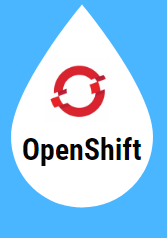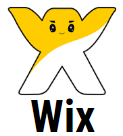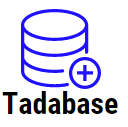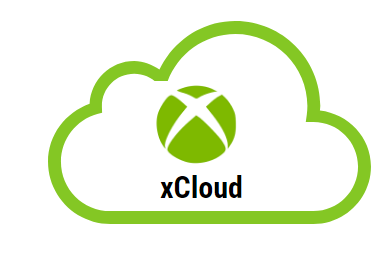Updated June 5, 2023
Introduction to Azure
Various organizations offer many cloud computing platforms. Windows Azure is one of them, which Microsoft provides. Azure is a managed data center used through a global network to build, deploy, deliver services, and manage applications.
Microsoft Azure offers a wide range of services that you can use without buying and supplying your hardware. Azure provides quick solutions for development through its faster computing speed, network and application services, and storage and provides resources. Microsoft Azure is a public cloud that provides services like PaaS and IaaS. These services support many programming languages and frameworks. Microsoft Azure Stack is an add-on to Windows Server 2016. The user can deploy many-core Azure services in the data center using it.
List of Microsoft Azure Alternatives
While Azure provides a wide range of services, there are some factors users need to know about Azure. Azure can be costly, depending on your setup. It is scalable, but that scalability comes at a cost. Some reports based on user reviews and testing state a repeated crash and incomplete documentation on some projects.
Hence the list of Azure alternatives is given below:
1. OpenShift
OpenShift is a free source, but they have some limitations. These open shifts are used for hosting and creation purposes. This will empower the application and host app on the openshift Server to change and deploy. Open-Shift is a Red-Hat cloud platform designed to simplify hosting applications and development. This will give us complete control of your application and coding, which we will prefer. You can make your app and use your custom domain name for marketing purposes out of any primary programming language. For Example – java, Ruby, etc.
2. Amazon EC2
Amazon EC2 has designed a simple web service interface of the Amazon EC2 allows you to acquire and configure minimum friction capacity. This will enable you to control your computer resources entirely and run in the proven computer environment of Amazon. Amazon EC2 modifies the computing economy by allowing you to pay only for the capacity you use. With Amazon EC2, you can increase or decrease capacity in minutes, not hours or days. The commitment of the Amazon EC2 Service Level Agreement is 99.99% for each Amazon EC2 region. Amazon EC2 allows you to select your operating system and applications to choose a memory, CPU, instance, and boot partition size configuration.
3. Wix
An Israeli cloud-based web development platform. With its drag-and-drop HTML 5 Web site, Wix provides customizable website templates, including apps, graphics, image galleries, fonts, and other capabilities. Wix has introduced a mobile editor to enable users to change their sites for mobile access. Wix had 8.5 million users in March 2011 and a Series D funding of $ 40 million, bringing its total funding to $ 61 million. To connect your websites to your domain, users should purchase premium packages to remove Wix ads, access form-builder, add e-commerce capabilities, or purchase additional data and bandwidth storage.
4. DigitalOcean
DigitalOcean is designed for developers. Using the workspace offered by DigitalOcean, team members can access information from any location by setting up permissions. DigitalOcean provides a cloud application’s deployment, iteration, management, and scalability. It has subscriptions like monthly yearly etc., based on the user’s requirement. It also releases updates and manages apps and services. DigitalOcean automates application deployments, monitoring, instance replication, cluster scheduling, and seamless application releases. High Availability is the key feature of DigitalOcean because it routinely checks the status of applications to detect and replace irresponsive instances.
5. Tadabase
Tadabase is a web-based platform for constructing and managing web-based databases to customize them without code. The Tadabase app is SEO-friendly, and also it comes with SSL Certificates. Data and files may be hosted in the highest grade & safe environments of Tadabase, or users could use AWS, Dropbox, or FTP to integrate their solutions. Collaboration is never going to be a cap. Add unlimited users and roles so that, whenever you need, you can share your data with anyone. Formats allow your data to be intuitive with strong features such as automated e-mails and texts, workflow initiated, validated data, signatures, and more.
6. Vultr
Vultr is a cloud hosting solution with warp-10 fast SSD VPS cloud servers. It provides high-performance Solid-State Drives(SSD) cloud servers. Because of SSD, it can back up to 10TB of data and up to 1200MB/sec IO. When using vultr, it provides full root access and a dedicated IP address included with all Virtual Machines. It supports 16 low-latency locations around the world.
7. CloudHub
CloudHub (iPaaS) is a service integration platform.CloudHub is an elastic cloud, which is on request.CloudHub offers the ability to build integration applications, publish REST APIs and web-based services, and more. Upload capacity is typically lower than download capacity in asymmetrical connections. You can build integration applications fast and deploy them in CloudHub with Anypoint Studio (Studio) with a few clicks, without even leaving Studio. Last, users pay for the networking capacity, so the higher the link capacity, the higher the cost. To find out how much capacity they need, companies have to calculate the maximum number of users that could use the network connection simultaneously and multiply the capacity of each application to provide bandwidth.
8. xCloud
The upcoming Project xCloud game streaming service is shown live on Microsoft. xCloud was released last year by the software developer providing a cloud gaming service that streams games to PCs, consoles, and mobile devices.
Recommended Articles
This has been a guide to Alternatives to Azure. Here we discussed the introduction to Azure along with a list of top Azure alternatives. You can also go through our other suggested articles to learn more-









